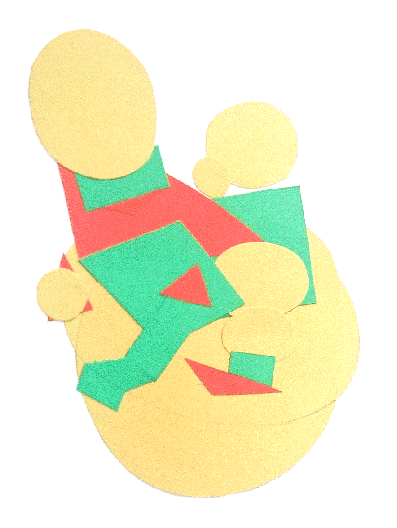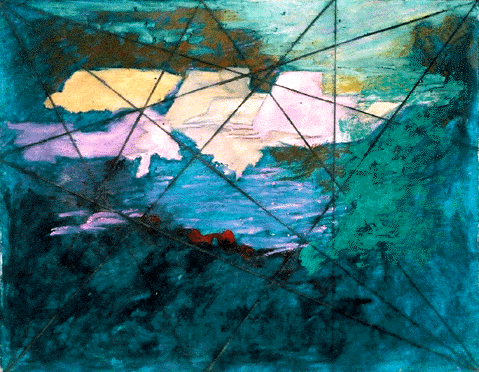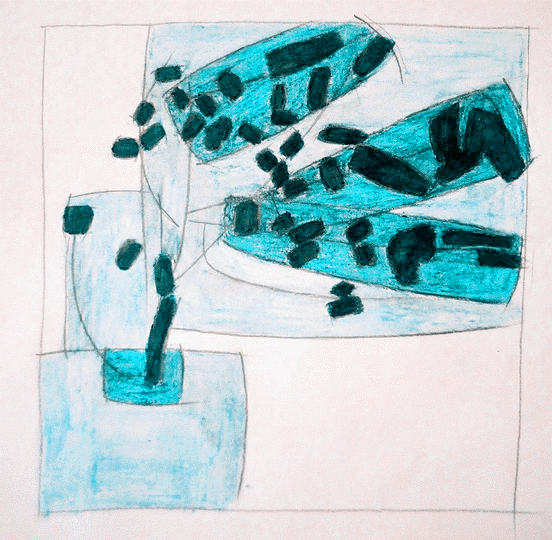Art modules for elementary grades
A visual language for complementary learning enhancement
Visual Language is a different kind of art program – it’s structured, comprehensive and engaging. Developed to assist busy teachers with art lessons, VL organizes concepts and principles for grades 2 – 8 in modules that are chock-full of pictorials, explained with easily understood teaching notes and presented through sequenced activities and cross-curricular suggestions.
Each grade level program covers approximately 80 ‑ 85 visual art concepts averaging about 100 hours of lesson material. The range of topics on art fundamentals is both focused and manageable through carefully aligned objectives and evaluation points. A resource for any classroom and it comes with a glossary too!
Lesson content includes
- Overview of topic outcomes
- Specific outcomes for each exercise
- Illustrated lecture notes
- Illustrated support questions
- Three or more exercises
- Sample illustrations for exercises
- Grading criteria
- Related topics from other modules and levels
- Suggested cross‑curricular links
- Glossary and cross‑referenced index
-
Grades 2 and 3
Building block elements and structures are the foundatio
 ns for many art principles that underpin complex development. The focus at the grade 2/3 level is on building block elements and structures of visual language. Students explore primary components of art, how they interact with one another and their role as foundations for complex development and thinking.
ns for many art principles that underpin complex development. The focus at the grade 2/3 level is on building block elements and structures of visual language. Students explore primary components of art, how they interact with one another and their role as foundations for complex development and thinking.Shape basics
- Investigate primary skills in imagery and organization.
- Differentiate qualities and dimensions through line.
- Recognize characteristics of balance and symmetry.
- Cultivate structured thinking through framework foundations.
Form basics
- Coordinate observation and drawing skills.
- Identify 3-dimensional aspects of elementary forms.
- Make appropriate decisions regarding lines and shapes in creating form.
- Recognize cues that signal change creating movement and form.
Frameworks
- Make use of structures in planning pictures.
- Identify common characteristics to form groups.
- Develop transitions from groups to patterns.
- Recognize qualities of rhythm.
Tone
- Develop motor skills in applying tone using pencil.
- Make comparisons in contrast through tone.
- Identify differences and transitions using line, tone and edge.
- Determine key shape and form characteristics through silhouettes.
Colour
- Learn colour organization through primary and secondary colours.
- Compare colour variations through light and dark.
- Arrange colours through light and dark values.
- Explore colour options using a single hue.
-
Grades 4 and 5
Variation is at the heart of creativity and provides a growth environment for design building blocks. The focus at the grade 4/5 level is on coordinating elements of change and transition. Students work with frameworks that re-structure shape, form and space in both 2 and 3 dimensions.
Shape kinetics
- Observe and analyze movement through gesture drawings.
- Examine linkages between outer changes and internal structure.
- Differentiate symmetrical and asymmetrical balance.
- Coordinate balance and shape to suggest movement.
Form Growth
- Explore parts of complex forms.
- Identify planes within complex forms.
- Develop observation skills through drawing contours and planes.
- Construct simple, one‑point perspective drawings.
Field & Space
- Organize design areas using internal geometrical structures.
- Identify and explore spatial regions.
- Coordinate pictorial elements to suggest space.
- Integrate subject and spatial regions using contour.
Tone
- Organize tonal areas into light, middle and dark.
- Coordinate organization methods using tone and field.
- Synchronize tone and form development.
- Evaluate tone intensity found in other media.
Tints & Shades
- Analyze contrast through light and dark colour.
- Expand colour possibilities through monochrome arrangements.
- Compare colour dimensions through monochrome & complementary designs.
- Apply principles of colour in compositions.
-
Grade 6
With increased understanding and confidence using foundation elements attention may be shifted to look at ways to link elements in more coherent designs. Focus at the grade 6 level is on relationships that underpin 2 and 3-dimensional design.
- Make use of constructs to coordinate observation and drawing.
- Learn to make estimates and evaluations using non‑standard units of measure.
- Analyze coordinates of a drawing using internal alignments.
- Contrast contour characteristics for dynamically opposite qualities.
Form Unity
- Construct form by exploring its planes.
- Integrate and consolidate through use of shadow.
- Assess strategies in unifying design.
- Assemble form using three values.
Design integration
- Define positive and negative areas.
- Illustrate proportion using ratios and grids.
- Interpret movement through drawing.
- Unify the design with tonal value.
- Coordinate line, tone and contour.
Colour
- Distinguish colour value and saturation.
- Identify warm and cool colour variations.
- Evaluate and apply types of contrast found in colour.
-
Grades 7 and 8
The design process is iterative, bringing together visu
 al interpretations that occur at different points of development. Focus at the grade 7/8 level applies art principles and their interactions through multi-stages in creative progress and studies their close relationship with expression.
al interpretations that occur at different points of development. Focus at the grade 7/8 level applies art principles and their interactions through multi-stages in creative progress and studies their close relationship with expression.Form development
- Make use of frameworks in contour drawing.
- Incorporate rhythm and movement to unify a drawing.
- Translate from 2 to 3-dimensional form using front and side planes.
- Interpret a tonal arrangement using 5 values.
- Coordinate value contrast and linear perspective.
- Integrate form and detail
Design order
- Organize design composition using proportional systems.
- Employ techniques that direct eye movement over a design.
- Choose appropriate strategies to balance a design.
- Enhance design dynamics through use of counter-movement.
- Create a focal area supported by the design hierarchy.
Colour
- Make use of the colour organization systems.
- Examine the effects of context on colour arrangements.
- Modify colour to describe spatial effects.
- Coordinate colour with other design elements to create focus and emphasis.
- Assess expressive, emotional and symbolic qualities of colour.
[insta-gallery id="1"]

